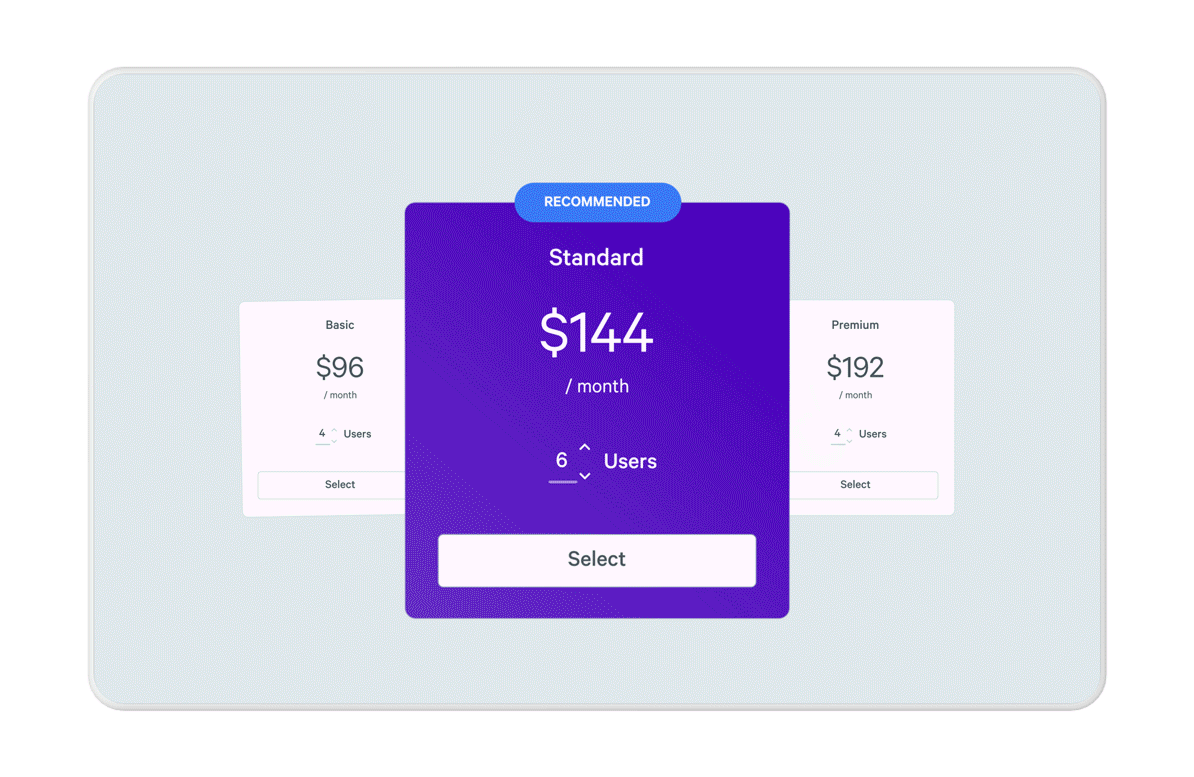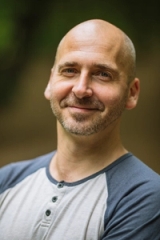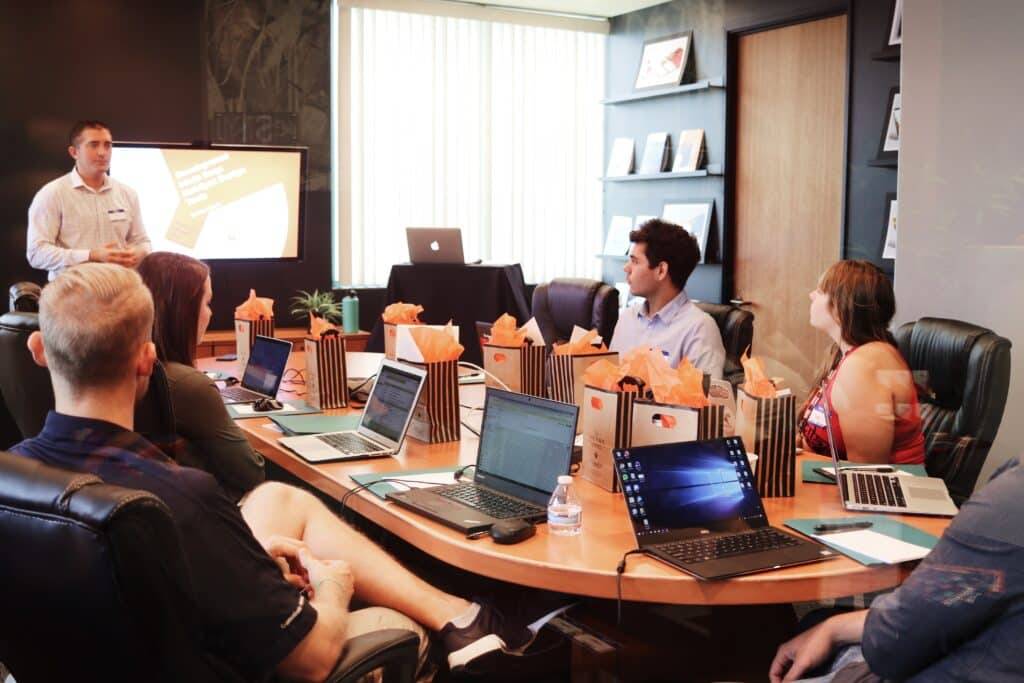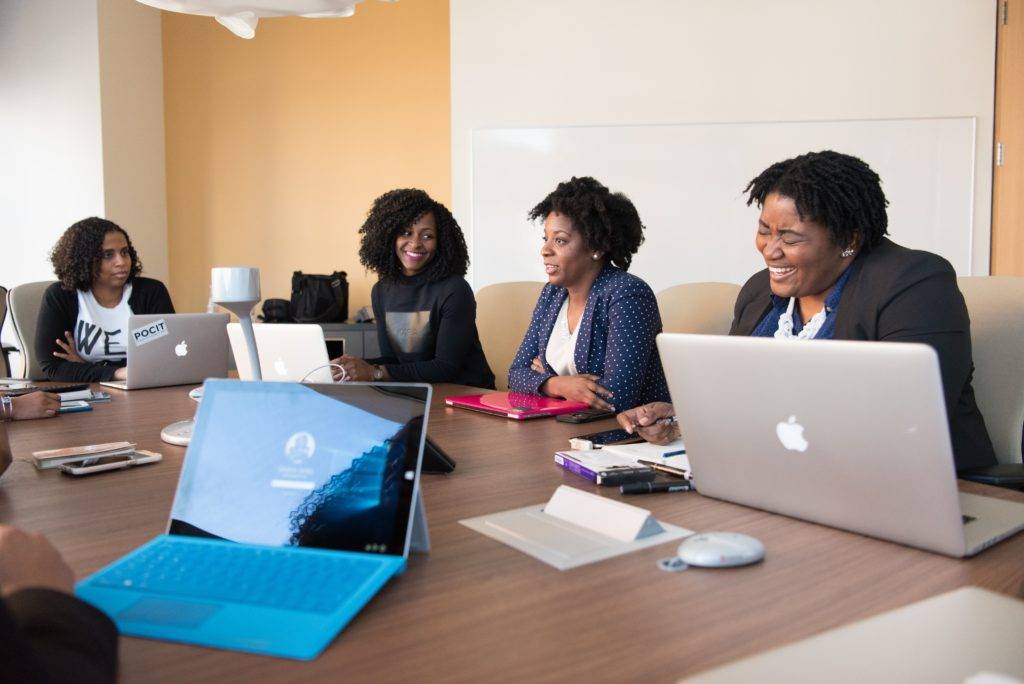There’s an age-old adage in sales: Time kills deals. Sure, efficient pipelines, warm leads, and strong business relationships don’t just happen overnight, but signing on the dotted line should.
Successful sales negotiations are a product of efficient business development and account management processes, built through collaborative and informed client-supplier discussions to manifest in crystal clear expectations and agreements. If you’ve nailed your negotiations, signing should be a formality. If you haven’t, your client might start to dawdle and guess what? Time kills deals.
By leveraging proposal software, you can better ensure the final stages of your sales agreements are snappy and efficient. Instead of antiquated back-and-forths featuring hundreds of iterations of the same PDF and endless hunting through your inbox for the most up-to-date version, consider deploying a Qwilr proposal instead.
Strategic story architecture, data-driven value propositions, excellent visuals, and solution-specific slides make for a comprehensive sales proposal that delivers, leaving no space for the type of miscommunication or confusion that might otherwise become a handbrake.
In this article, we break down how to use proposal software to clarify and inform your sales negotiations and increase your win rates.
What is a sales negotiation?
Sales negotiation is the art of reaching mutually beneficial agreements between sellers and buyers. It’s not a market-style haggling over price—it’s so much more. Effective sales negotiations involve aligning on value, scope, timelines, and expectations, all while building a solid relationship and keeping the deal momentum alive.
The negotiation process kicks off the moment a sales conversation begins. From the initial discovery call to the final proposal review, every touchpoint is an opportunity to reinforce value and steer the deal toward a close.
Done right, a sales negotiation should feel less like a tug-of-war and more like collaborative problem-solving. It’s about understanding what matters most to your prospect—and showing how your solution delivers on that need in a way that speaks to them.
No one enjoys drawn-out, confusing back-and-forths, especially not sales reps who are dealing with multiple negotiations and deals at the same time. You remove the friction when your proposal is clear, data-backed, and easy to engage with. And that’s when negotiation becomes just a formality on the road to “yes.”
Understanding the art of sales negotiations
Sales negotiations are more than bartering or price setting. They encapsulate the full scope of strategic conversations aimed at creating value between a business and its clients. Negotiations start long before prices are discussed at all – first impressions matter, from cold calling and emailing to expo meet and greets.
Businesses invest heavily in their sales functionalities for good reason; ultimately, sales are the lifeblood of any business. Equipping your sales team with the right tools will enhance their rates of success and encourage more prosperous business relationships.
Read next: How to create a sales one-pager
Sales negotiation essentials
- Preparation and research help you gain a proper understanding of the client’s pain points and problems, budget constraints, and decision-making processes.
- Clear communication ensures you set trustworthy expectations, agreements, terms, and prices.
- Flexibility encourages good faith with your clients while demonstrating your commitment to solving their challenges.
- Relationship-building guarantees enduring partnerships and working agreements instead of one-off transactional exchanges.
Sales negotiation blockers
- Inefficient proposal creation: manually drafting multiple contract iterations and revisions can lead to negotiation fatigue and a lack of continuity between client and supplier.
- Lack of transparency: In manual sales negotiations, sales reps are shut out of client discussions and feedback unless it's directly shared with them.
- Pricing disagreements: Pricing backtracking or misalignment quickly extinguishes any good faith built during the earlier prospecting phases.
- Ineffective follow-ups: Lacking data-driven insights, real-time feedback, and actionable next steps puts suppliers on the back foot in sales negotiations.
Sales negotiations are delicate. It’s essential that both parties feel fully involved to arrive at the swiftest agreements. Manual sales proposals that rely on basic PDFs, spreadsheets, and cluttered inboxes leave much to be desired. Your sales proposal software should rather enhance the key requirements of a successful negotiation.
Qwilr’s sales proposal software gets down to brass tacks quicker with greater transparency and clearer data.
Sales negotiation techniques
Like any skill, negotiation techniques should be practiced regularly. A skilled negotiator needs to be able to adapt to evolving sales situations with responses that reflect a deep understanding of the principles of negotiation.
These aren’t shortcuts, they’re psychological approaches that can be mastered for consistent negotiation success. For example, salespeople can rely on the innate human need for reciprocity to ensure that in negotiations, they never have to give anything away without getting something in return.
Anchoring
Rather than asking the customer how much they’d like to pay and then attempting to match it, anchoring allows negotiators to quickly set a benchmark figure. This serves both to qualify the lead and dictate any further amounts suggested by either party. This technique was explored in detail in Daniel Kahneman’s ‘Thinking Fast and Slow’, where he explained;
“If you consider how much you should pay for a house, you’ll be influenced by the asking price. The same house will appear more valuable if its listing price is high than if it’s low, even if you’re determined to resist the influence of this number.”
This technique can be used in conjunction with independent standards such as industry benchmarks, past contracts, and competitor pricing. It can also, in some circumstances, be used to propose an unrealistically high first offer, to which the customer can respond with a more realistic figure which represents the most they’re willing to pay at this stage. Either way, anchoring is a powerful negotiating tool.
Mirroring
Mirroring leverages a different cognitive bias, whereby people have been shown to respond favorably to others who share similarities with them. This bias includes almost any characteristic including political persuasion, appearance, and body language - right down to which sports team you support.
Mirroring techniques can be used throughout the sales process, building trust and producing beneficial outcomes - such as those shown in this study, where lawyers who linguistically mirrored judges were shown to improve their chances of winning a case from 11% to 25%.
Persuasive tools and collateral
It’s not all cognitive biases and psychological mind games. A persuasive sales negotiation needs to demonstrate clearly to the prospect that what you’re selling is going to fix their problem. The more proof you can offer of this outcome, the less you’ll need to rely on hard negotiation.
That’s why having the right sales collateral can strengthen your negotiating position in every single sales conversation. With customizable templates, Qwilr lets you personalize your proposals and preempt common customer objections with beautifully presented data that’s perfectly targeted to reduce friction in the sales process.
Say The Word ‘No’
In ‘Never Split The Difference’, ex-FBI agent Chris Voss’s popular introduction to high-stakes negotiation, he subverts traditional wisdom regarding ‘yes’ and ‘no’.
Voss makes a convincing case for actively seeking the word ‘no’ from the other side in a negotiation. As well as letting the customer establish a firm boundary, saying ‘no’ can give the speaker a feeling of ‘safety, security, and control’.
A skilled salesperson can steer a negotiation in a way that provides safe opportunities for the customer to say ‘no’, creating these psychological benefits at little actual cost.
A simple example from ‘Never Split The Difference’ is the opening gambit of any phone call - by asking, ‘is now a bad time to talk?’ (rather than, ‘is this a good time?’)
Framing the choice in this way, the customer is empowered to either use ‘no’ (granting permission) or reject the call by agreeing with the salesperson’s suggestion (yes, this is a bad time to talk).
Loss Aversion
Another cognitive bias-based technique defined by Kahneman and other behavioral economists, loss aversion theory proposes that people are more motivated by avoiding loss than by making gains.
The interactions between loss aversion, supply and demand can be used to explain many consumer behaviors, which at first glance make little sense. Loss aversion is a powerful tool that is used across many industries to negotiate with and motivate customers(most notably the insurance industry, whose entire sales strategy is arguably based on loss aversion).
Open-ended questions
Voss and others often categorize negotiation as a process of discovery - the more you can learn about what the other party wants and needs and the different factors influencing their decision, the easier it is to work out how to offer them a deal which works for both of you.
To this end, open questions beginning with ‘why’, ‘how’, or ‘what’ will let you find out much more about your customer and their pain points. Open questions also tend to sound less threatening, as the customer has a lot more choice in how much information they choose to share in response.
Sales negotiation tactics that work
There’s no one-size-fits-all playbook for negotiating a deal, but there are proven strategies that consistently drive better outcomes. Here’s how to turn your sales negotiations from sluggish to streamlined, regardless of your industry or audience.
Lead with value, not price
Price will always be part of the conversation, but it shouldn’t be the focus. Cost becomes less and less relevant the more valuable a prospect finds your product or service. It’s your job to figure out how your solution can solve their most glaring problems.
Do your research on your client’s biggest pain points, use data to communicate your solution and client outcomes, and drive it home with ROI calculators. This should all come before ever mentioning cost.
Pro tip: Visualize impact within your proposal using interactive elements, charts, testimonials, or outcome-based stats. It’s harder to negotiate against proven results.

Embed ROI calculators directly into your Qwilr proposals
Do your homework
How can you properly showcase your value if you just wing it? Preparation is a non-negotiable and is a pivotal aspect of successful sales negotiations.
Understand your prospect’s challenges, stakeholders, budget constraints, and potential deal-breakers. The more you know going in, the more agile (and confident) you’ll be when the conversation shifts.
With proper preparation, you’ll be ready to answer questions and maintain momentum even when the conversation takes a 180-degree turn.
Give prospects options
A single offer can feel like an ultimatum— people like to feel as if they have some sort of control over the final decision and cost.
If you offer tiered pricing packages or add-on options, you give prospects that sense of control, which makes them feel more comfortable accepting and signing on the dotted line. It shifts the conversation from “should we buy?” to “which option works best?”—a subtle but powerful difference.
Pro tip: Interactive pricing tables in your proposals make this experience seamless and buyer-friendly. With Qwilr, you can create dynamic quotes and pricing packages with ease.

Create urgency without pressure
Time kills deals, but false urgency kills trust. Unless you’re offering an attractive time-based discount, no one is buying the urgency story you’re selling.
Instead of pushy deadlines, reinforce timelines based on mutual benefit, such as milestone goals or quarterly budgets.
Pro tip: Track proposal engagement in real time to follow up when interest peaks, not when it fizzles.

Sales negotiation training strategies for teams
Across a sales organization, members of the sales team may have different experiences and comfort levels with negotiation techniques. This is why sales negotiation training and practice should be a key component of your sales organization's ongoing training program.
You don’t want negotiation training to be a one-and-done experience, as consistent practice will help sales team members continue to build this skill which can help grow your bottom line. This sales negotiation training doesn’t have to be stuffy and theoretical. You can (and should) include elements of role-play and challenge your salespeople to practice real-life scenarios from the point of view of both the seller and the customer.
Chris Voss talks at length about the importance of ‘tactical empathy’ in negotiation strategy. Unless you understand the point of view of the other person, you’ll never build rapport - and you’re unlikely to reach your desired outcome.
Practicing mock negotiations
Mock negotiations are a great way for your salespeople to slow down the interactions of the sales negotiation in a ‘test environment’ that’s considerably less stressful, with much less at stake than in a real-world sales conversation.
Running scenarios allows sales professionals to experience aspects of negotiation that they might be scared of trying in real life - walking away from the negotiation table is much less nerve-wracking in a consequence-free simulation.
Identifying decision-makers
To ensure negotiations run smoothly with no surprises, it’s vital to make sure your team accounts for everyone with the power to make or break a sales deal. There’s nothing worse than securing an agreement only to find out that a ‘silent partner’ isn’t so silent, after all.
Identifying decision-makers early should be factored into your lead qualification framework - sales reps should be researching information about the company structure before exploring the decision-making process in early conversations as part of the sales process.
Your team can practice doing this due diligence together or learn from past deals where stakeholders or decision-makers appeared later in the sales process. When reviewing the latter in a training conversation, ask the team to consider and brainstorm ways they might have discovered this additional decision-maker earlier in the sales process.
Recognizing negotiation tactics
A schooling in sales negotiation should also be accompanied by an overview of buyer’s negotiation techniques. Learning to identify the tools used by the opposition is an essential element of your sales team negotiation training program.
While many of these buyer’s negotiation techniques are rooted in the same cognitive biases as sales negotiation techniques, the difference in starting position might make them difficult to recognize if sellers aren’t looking for them.
Using data to define boundaries
Effective negotiation involves give and take. But how much can you give? How much should you take? This information should be present and clearly delineated in the sales playbook.
It’s even better to take your team one step further and train them to understand why these limits exist. Train them to understand sales metrics, forecasting, and analytics properly. Then they’ll understand the deals they’re making and bring that value to their sales negotiations, helping the customer understand the value of what’s offered.
Testing negotiation frameworks
Academic negotiation theory is a fascinating (and profitable) field of study. Frameworks like Zone of Possible Agreement (ZOPA), Best Alternative to a Negotiated Agreement (BATNA), and Win-Win build on game theory rationales that have been put to good use since the 1940s.
It’s important to remember that these frameworks may not always work for your specific product and sales strategy. It’s worth learning about and experimenting with their elements, but they aren’t magic bullets. Analyzing negotiation frameworks (and their drawbacks) will help your team think more strategically about negotiation.
Empathising, listening and labeling
With many salespeople identifying as extroverts, and being very comfortable taking the lead in a sales conversation, training in the art of active listening can take some practice. Remind sellers to really slow down and listen to their prospects, don’t just wait to respond. Doing this in your role-playing scenarios is important, as just like exercising any new skill it gets stronger with regular practice.
In ‘Never Split The Difference,’ Chris Voss returns time and again to the idea of ‘active listening’ as a way to better understand the obstacles preventing the other party from agreeing to your request. He encourages negotiators to;
“Negotiate in their world. Persuasion is not about how bright or smooth, or forceful you are. It’s about the other party convincing themselves that the solution you want is their own idea…It’s not about you.”
One technique you can use to facilitate this approach is labeling. This is a psychological tactic used to communicate your understanding of the other party. Once you’ve identified something about their position through listening to what they have to say, verbally label it, e.g. ‘it seems you’re feeling uncomfortable with the fee?’
When training this skill, have sellers take note of the word ‘seems’ here. It’s important not to tell people how they’re feeling
How sales proposal software will enhance your sales negotiations
Impressive proposals really are the foundation of a solid sales negotiation process. Customisable templates guarantee brand consistency. Visually appealing proposals are more likely to be interacted with and clearly understood. Real-time insights and collaboration help parties arrive at agreeable terms and conditions, and e-signature and instant-pay functions make deal completion secure and legally binding.
The right sales proposal tool will make your sales negotiation process faster, more efficient, and more lucrative. Here, we break down exactly how:
Faster proposal creation and customisation
The main challenge to any successful sales negotiation is time. The longer a deal spends in limbo, the more likely a client will lose interest, confidence, or commitment. You may also lose out to an opportunistic competitor.
Creating and modifying proposals manually is a time-consuming process. Even in the smallest sales teams, inconsistencies creep in. For larger accounts managed by multiple employees, inconsistencies appear unprofessional and disconcerting to prospects.
Using a sales proposal software ensures that only consistent, brand-approved proposals ever get in front of your clients. They remove operational bottlenecks on the supplier side and give clients peace of mind that messaging is trustworthy. They should:
- Provide pre-built templates that sales reps can quickly customize with deal-specific information.
- Use auto-fill features and automated content blocks to quickly and accurately import client-specific data from integrated CRMs and sales tools
- Offer real-time updates so any changes to pricing conditions, terms, or product details are added instantly without requiring a comprehensive overhaul or multiple iterations of the same agreement.
Sales teams can spend more time focusing on relationship management, new business development, and outbound sales initiatives and less time working with a clunky PDF proposal process.
Live collaboration and proposal transparency
Sales negotiations almost always involve multiple stakeholders. Purchasing decisions must be run through the chain of command, pricing terms must be set by sales directors, and CEOs need to sign final documents. Sales proposal software fosters seamless collaboration via:
- Real-time editing so various internal teams – like legal, finance, etc. – can quickly contribute without delaying the negotiation process.
- Collaborative features, such as the ability of team members to comment directly on the proposal
- Version control to keep everyone working from the most up-to-date document at all times.
Cutting out the time-consuming and distracting steps involved in manual deal-making – email exchanges, phone calls, interdepartmental communication – gets your proposals to the signing phase sooner.
Better pricing and terms negotiation
Negotiating price can be the make-or-break moment of any deal. Sales proposal software guarantees the most transparent and straightforward approach to potential sticking points. Cutting out any potential for mismatched expectations or inconsistent messaging will increase your closure rate.
The best proposal software improves pricing discussions in your sales negotiations by:
- Housing dynamic pricing options where clients can select different packages based on their custom or bespoke needs.
- Providing automated discount calculations that mitigate manual errors, miscommunications, and complex pricing structures.
- Leveraging comparison charts and ROI calculators to build client confidence and value recognition.
- Integrating payment processing software so clients can sign and pay on one document

Let buyers pay how they want. QwilrPay lets you collect payments via credit card, direct debit, bank transfer/ACH.
Live analytics and follow-ups
When sales negotiations end in static proposal documents, such as PDFs and Word documents, your sales team is left in the dark at crucial moments. If your team is blind to proposal engagement on the client side, your business is put on the back foot.
Proposal analytics provide you with important engagement insights so that you know when your proposal is open and viewed, which pages prospects engaged the most with, and most importantly, when the deal stalls. This means you can figure out points of friction and you can time your follow-up perfectly.
Enhanced proposal tracking and real-time insights mean:
- Real-time notifications when a prospect opens, views, or interacts with your proposal.
- Engagement analytics, showing your team proposal hotspots and other key sections from the perspective of the client.
These features take the guesswork out of the agreement and signing phases of your sales negotiation and keep you one step ahead of your clients, boosting your service and increasing the rate of closure.

Legally binding e-signature capabilities
There’s no use in a sales proposal software that requires an extra step when it comes to signing. Proposal tools are designed to comprehensively solve key blockers and bottlenecks in traditional sales negotiations and collapse multiple sales processes into one smooth operation. By integrating legally-binding signature capabilities and instant payments, your entire sales cycle is housed in one seamless platform.
Look for:
- Integrated e-signature services that allow clients to sign instantly without further third-party tools or add-ons.
- A plain text agreement feature so that you can send formal contracts alongside your proposal
- Automatic document storage to keep a water-tight record of activities, agreements, and deliverables.
- Security measures such as compliance with main ESIGN acts and laws and a secure audit trail

How to use proposals as a secret weapon in negotiations
As with any element in your tool stack, clearly understanding how and when to deploy various features is essential to seamless integration into your existing operations and workflows. The best proposal software services should optimize your processes and not present a steep learning curve or counterintuitive elements.
Implementing best practices will ensure your proposal software integration is efficient and that your sales negotiations are immediately improved. Here’s how you hit the ground running.
Customize proposals for each client you’re negotiating with
Generic proposals are an immediate sign to prospects that your sales team is not exclusively dedicated to solving its specific challenges. Bespoke proposals illustrate your team's investiture in each sales negotiation and establishes good faith from the outset. Building trust and ultimately winning new business begins with familiarity.
When you’re customising your proposal, make sure to:
- Use dynamic content to autofill client names, company details, and other deal-specific data accurately.
- Tailor your value propositions case-by-case to make sure you address each client’s specific pain points and propose bespoke solutions.
- Include custom pricing matrixes based on sales negotiation feedback and development – a stratified offering will improve your rate of acceptance and closure.
Protip: Integration with CRMs and other sales tools will greatly improve your sales team’s ability to create customized proposals. Tailor-made proposals will go a long way in resonating with key decision-makers.
Keep things short and sweet
Sales proposals need to be informative and comprehensive, but less is more. Ironing out the specifics is core to a successful sales negotiation process, but the final proposal should be concise and clear. This avoids prospects having to dig for the most relevant information and ensures ultimate clarity.
Focus on:
- A strong introduction that targets the client’s specific challenges
- A clear and comprehensive executive summary that outlines key information
- Clear problem and solution breakdown
- Transparent pricing
- A strong call to action that makes it clear the next step to take
Leverage interactive elements to engage prospects
How can you create a comprehensive proposal that showcases your value effectively without overwhelming prospects with information? With smart visuals, data points, and interactive elements.
Why use three pages to explain something that a 30-second video could achieve? Showcase important data in dashboards that make sense to prospects, and show off your value proposition with ROI calculators that speak directly to their bottom line.
With Qwilr’s web-based proposals, you can embed these elements directly into your proposal, providing an engaging and powerful buyer experience.

Optimize your sales negotiations with Qwilr
Your proposals should be the backbone of your sales negotiation process. Impressive proposals not only do most of the hard miles for you, but they’re also the crucial last step in the sales process. You must get them right.
Qwilr collapses multiple processes into an efficient process that makes sales negotiations a breeze. From interactive content and smart automation to insightful analytics and integrated payment features, our platform has it all. Don’t believe us? Sign up for a 14-day free trial and see for yourself.
About the author

Dan Lever|Brand Consultant and Copywriter
Dan Lever is an experienced brand consultant and copywriter. He brings over 7 years experience in marketing and sales development, across a range of industries including B2B SaaS, third sector and higher education.


